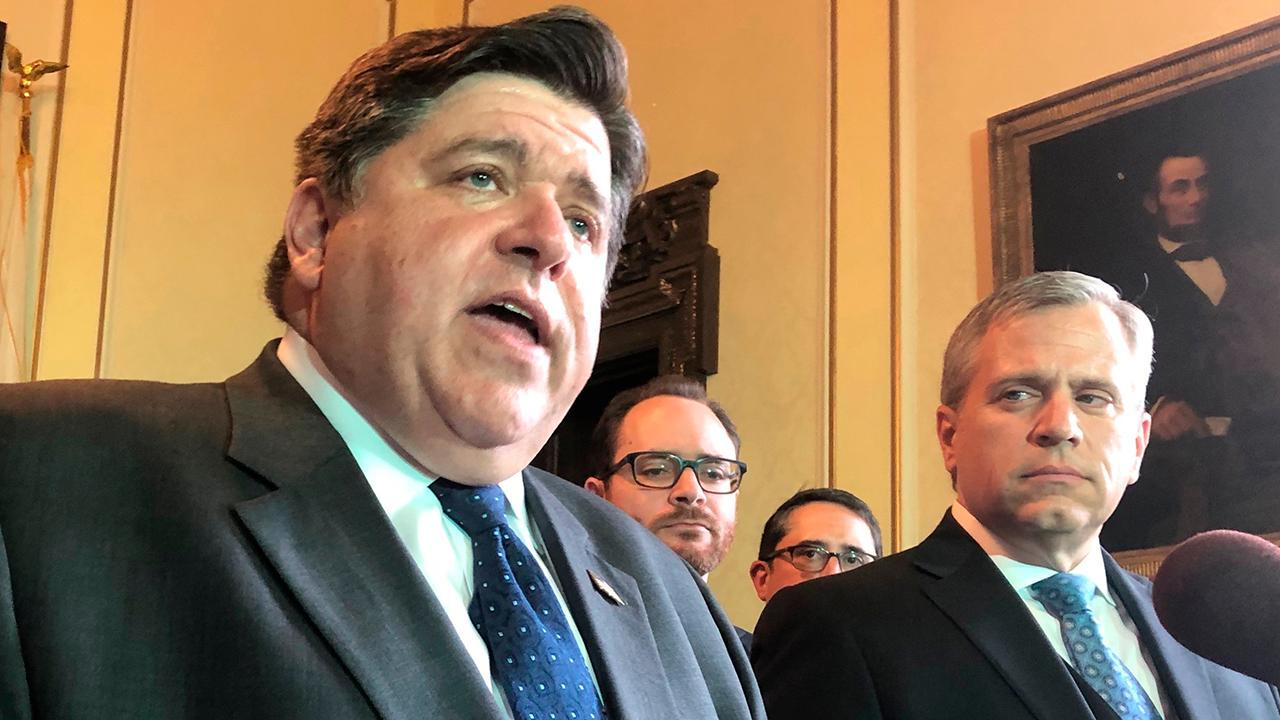Wealthy Illinois residents could see taxes spike
Illinois Gov. J.B. Pritzker has put forth new tax rates that could raise obligations for the wealthy if the state shifts from its flat tax to a progressive income tax.
Pritzker signed his fiscal 2020 budget plan this week, which includes what he has called “fair tax” rates – potentially hiking some taxpayers’ rates above the current flat rate of 4.95 percent.
Under the proposal, lower-income individuals would pay rates between 4.75 percent and 4.9 percent. Those with incomes between $100,000 and $250,000 would pay the 4.95 percent rate. The top rate, however, for those with incomes above $250,000 would reach 7.75 percent; 7.85 percent on incomes over $1 million and 7.99 percent for people making more than $750,000.
The corporate tax rate would also rise to 7.99 percent.
"A new era of fiscal stability has arrived in Illinois," Pritzker said in a statement. “We are on the verge of finally creating a fair income tax in Illinois that puts the burden of fixing our finances on people like me, who can most afford it, not the 97 percent of Illinoisans earning less than $250,000."
The switch to a progressive income tax structure will depend on voters. The state government last month approved a measure whereby voters will be asked to approve a constitutional amendment that would allow for a progressive income tax bracket system. As it stands, the state constitution calls for a flat tax rate. Sixty percent of voters need to vote “yes” in order for the provision to be approved.
Pritzker expects that the revised tax rates would earn the state an extra $3.4 billion in revenue. The change would not take effect until 2021.
Meanwhile, taxpayers have been leaving the state as it faces mounting fiscal challenges.
The state is facing a $3.2 billion structural budget deficit, a lawmaker told the Chicago Tribune. It also faces unfunded pension liabilities worth more than $133 billion. In a 2018 research note, JPMorgan’s Michael Cembalest said Illinois was one of two states where “deteriorations in pension finances … are practically irreversible.”
In order to address its pension gap, Cembalest said the state would have to either increase tax revenues by 25 percent, increase public sector worker contributions by 689 percent or achieve an annual investment return equal to 11.5 percent.
The state has $30.2 billion in outstanding debt, according to a new report from Moody’s Investors Services. Researchers said positives – including the state’s wealthy economic base and strong powers to control revenue and spending – were offset by unfunded pension liabilities, fixed mounting costs and a backlog of unpaid bills.
According to a 2019 study by WalletHub, Illinois has the ninth highest total state tax burden in the country – at 9.67 percent.
CLICK HERE TO GET THE FOX BUSINESS APP
Illinois was one of the states that experienced large outbound moves in 2018. According to a recent study, out of all the moves conducted within the state, nearly 66 percent were outbound. Illinois joins the ranks of high-tax states – like New York, New Jersey and Connecticut – which also saw large outflows.
Connecticut is one of the only other states in the past couple of decades that switched from a flat tax to a graduated tax system. The state moved from a 4.5 percent flat rate into a seven income bracket system. The state is currently facing a multi-billion budget deficit – and a group of millionaires in the state has asked for the governor to raise their taxes to battle shortfalls.




















